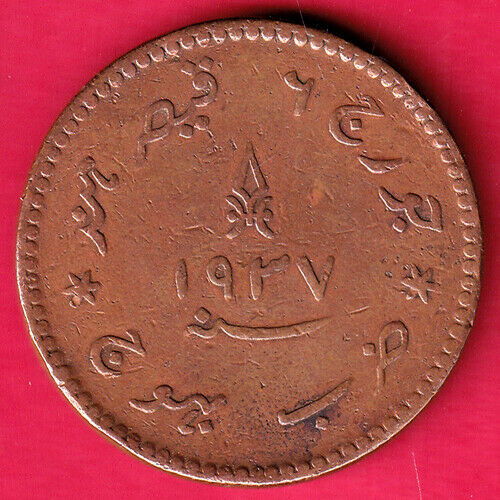-40%
KASHMIR DIDDA RANI RARE STATER BRONZE STANDING GODDESS IN X FINE CONDITION COIN
$ 0.52
- Description
- Size Guide
Description
ADD ME IN YOUR FAVORITE LISTSEE MY OTHER LISTING ITEM
Didda (c.?924 CE – 1003 CE), also known as The Catherine of Kashmir[1] and The Witch Queen,[2] was the ruler of Kashmir from 980 CE to 1003 CE. She first acted as regent for her son and various grandsons from 958 CE to 980 CE, and from 980 CE as sole ruler and monarch. Most knowledge relating to her is obtained from the Rajatarangini, a work written by Kalhana in the twelfth century. Contents 1 Life 1.1 Regent 1.2 Monarch 2 In popular culture 3 References Life Didda was a daughter of Simhar?ja, the King of Lohara, and a granddaughter on her maternal side of Bhimadeva Shahi, one of the Hindu Shahi of Kabul. Lohara lay in the Pir Panjal range of mountains, on a trade route between western Punjab and Kashmir. She married the King of Kashmir, Ksemagupta, thus uniting the Kingdom of Lohara with that of her husband. Even prior to becoming regent, Didda had considerable influence in state affairs, and coins have been found which appear to show both her name and that of Ksemagupta.[5] Regent When Ksemagupta died following a fever contracted after a hunt in 958, he was succeeded by his son, Abhimanyu II. As Abhimanyu was still a child, Didda acted as regent and effectively exercised sole power.[6] Compared to other societies of the period, women in Kashmir were held in high regard.[7] Her first task was to rid herself of troublesome ministers and nobles, whom she drove from office only to have them rebel against her. The situation was tense and she came close to losing control, but having asserted her position with support from others, including some whom she bribed, Didda displayed a ruthlessness in executing not only the rebels who had been captured but also their families. Further trouble erupted in 972, when Abhimanyu died. He was succeeded by his son, Nandigupta, still a young child himself, and this caused restlessness among the D?maras, who were feudatory landlords and later to cause huge probl
ems for the Lohara dynasty which Didda founded.












